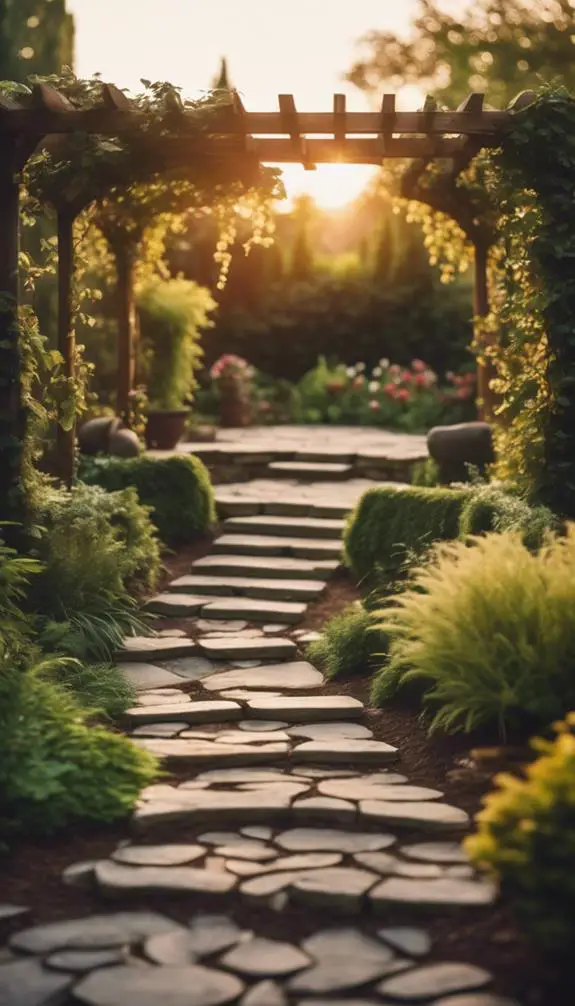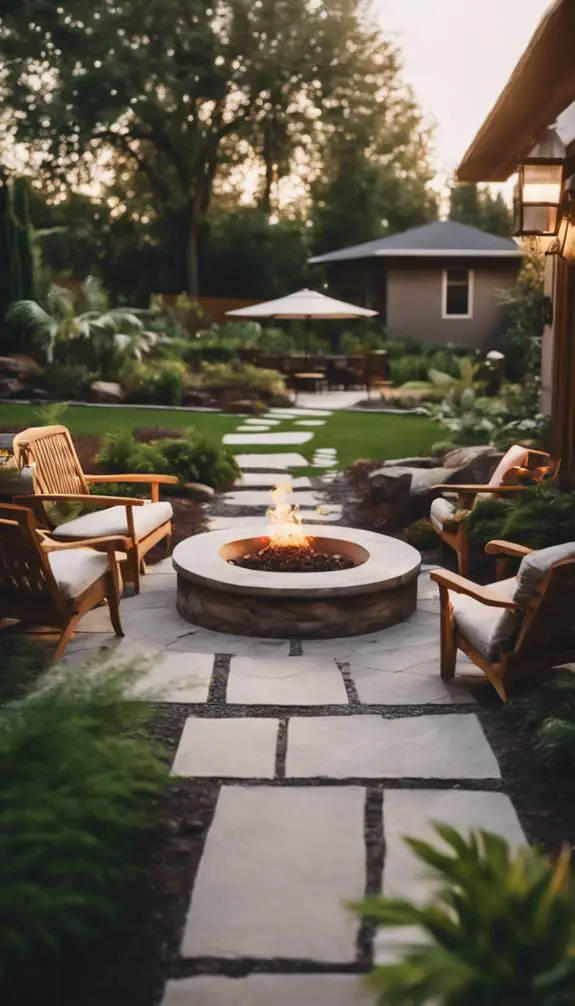As you step out into your backyard, you can't help but envision a space that's more than just a patch of grass. You want an oasis that reflects your personality, a haven where you can relax, entertain, and make memories with loved ones. But where do you start? Defining your style, evaluating your yard's conditions, and setting a realistic budget are just the beginning. You'll need to ponder the elements that'll bring your vision to life, from focal points to materials, lighting, and water features. The possibilities are endless, and the journey to creating your dream backyard starts now – but what's the first step you'll take?
Summary
- Assess yard conditions, including sun patterns, slopes, and water flow, to create a functional and visually appealing design.
- Establish a budget and prioritize must-haves and nice-to-haves to guide design decisions and avoid costly surprises.
- Strategically position a focal point, such as a water feature or fire pit, to create visual interest and guide the viewer's gaze.
- Combine durable materials, textures, and colors to create a cohesive look that blends with the natural surroundings and withstands weathering.
- Create functional zones, such as dining or lounge areas, and allocate space accordingly to enhance the overall backyard experience.
Defining Your Backyard Style
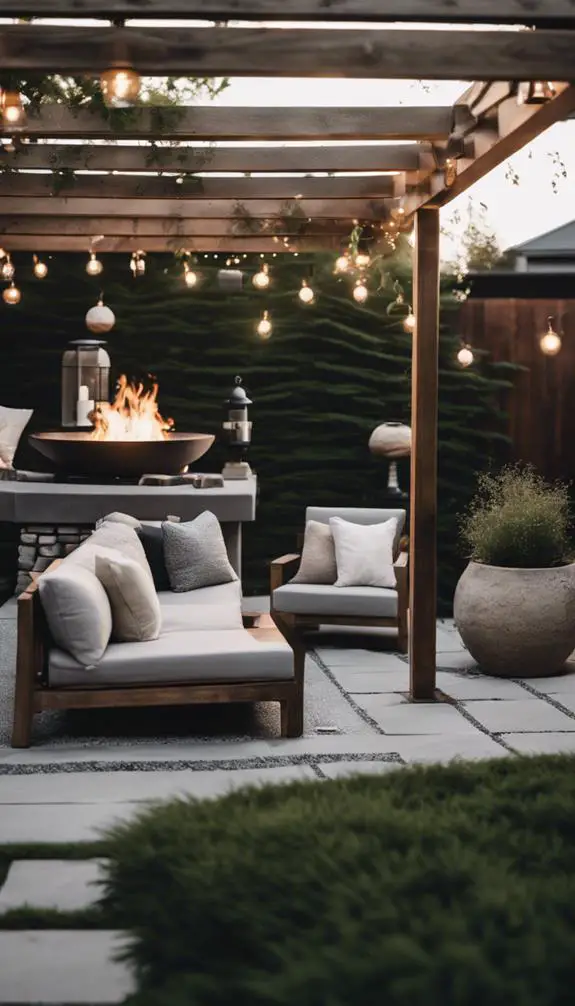
Every backyard tells a story, and yours is no exception. Yours is a reflection of your personality, interests, and lifestyle.
As you envision your ideal outdoor space, consider the backyard personality you want to create. Do you prefer a modern, sleek aesthetic or a cozy, rustic vibe?
Think about the activities you'll be doing in your yard – dining, entertaining, or relaxing. This will help you define your outdoor aesthetic. Consider the colors, textures, and materials that evoke the desired mood and atmosphere.
Imagine the scent of blooming flowers, the sound of a water feature, or the warmth of a fire pit. Your backyard style should be an extension of your indoor living space, seamlessly blending form and function.
Assessing Your Yard's Conditions
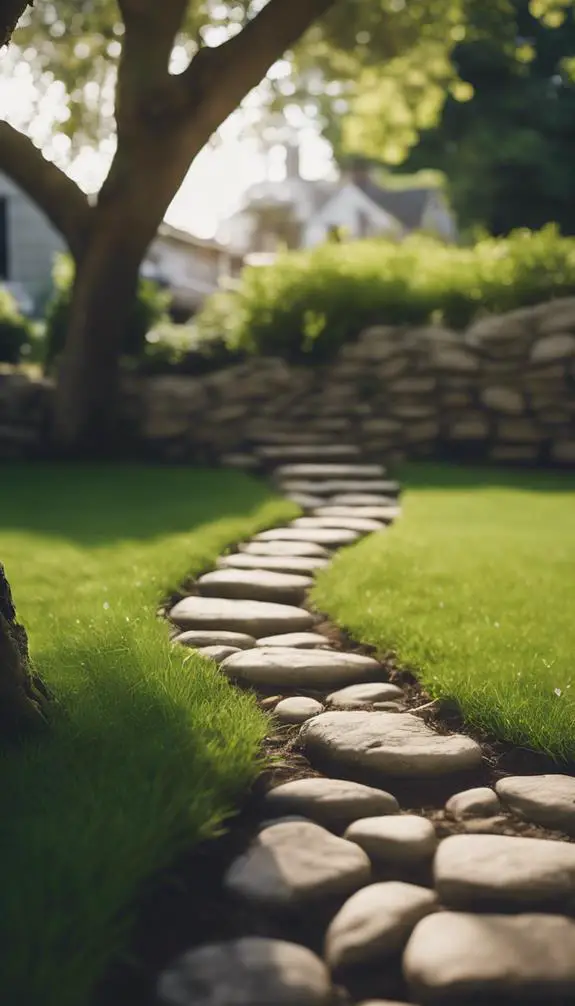
Now that you've defined your backyard personality, it's time to get familiar with the lay of the land.
Take note of your yard's sun patterns: where does the sun rise and set, and which areas receive direct sunlight throughout the day? Observe how the sun's path affects the temperature and ambiance of your outdoor space.
Next, assess your yard slopes: are there any steep inclines or gradual declines? Identify areas where water might collect or flow, and consider how you can work with these natural features to create a functional and visually appealing design.
Setting a Realistic Budget
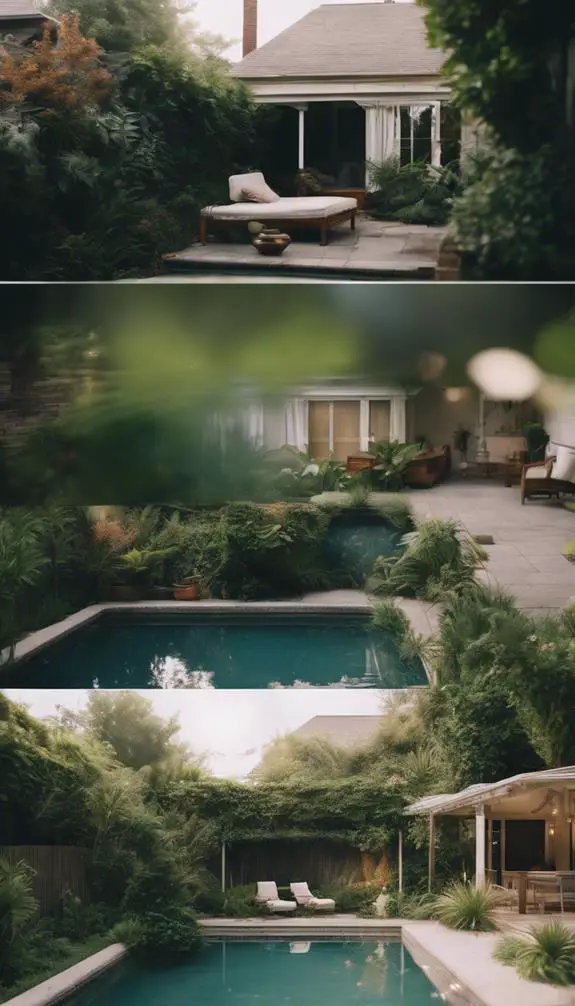
As you start planning your backyard design, you'll need to define the budget constraints that'll guide your decisions, considering factors like the cost of materials, labor, and permits.
You'll also need to establish funding priorities, identifying which elements are must-haves and which can be sacrificed if costs exceed expectations.
Define Budget Constraints
Your backyard design project begins with a pivotal step: defining budget constraints.
This essential phase involves budget planning, where you determine how much you're willing to spend on your outdoor space.
Start by estimating costs for each element, from patios and walkways to landscaping and lighting.
Consider the materials, labor, and permits required for each feature.
Be realistic about what you can afford, and prioritize your must-haves versus nice-to-haves.
A well-planned budget will help you avoid costly surprises down the line.
Establish Funding Priorities
Budget blueprints take shape when you identify your funding priorities, certifying that every dollar is allocated efficiently.
To establish a realistic budget, you'll need to set clear funding goals, allocating resources to must-haves and nice-to-haves.
Start by categorizing your backyard design elements into essential and desirable features. Assign a monetary value to each, considering factors like materials, labor, and permits.
Then, prioritize your spending based on your needs and wants. Allocate a larger percentage of your budget to essential items, such as structural elements, and reserve a smaller portion for desirable features, like decorative accents.
Choosing a Focal Point
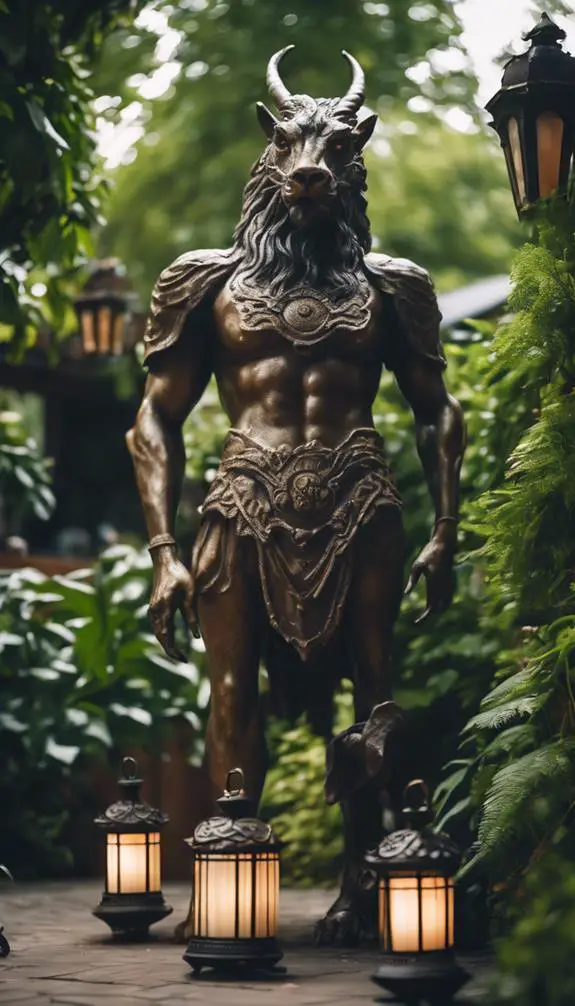
When designing your backyard, a focal point serves as the visual anchor that draws the eye and creates visual interest.
As you plan your outdoor space, consider the placement of your focal point carefully, as it will set the tone for the entire design. Strategically position your focal point to guide the viewer's gaze through the space, creating a sense of flow and balance.
This visual anchor can be a statement piece, such as a water feature, sculpture, or fire pit, or a natural element, like a tree or garden bed.
Effective focal point placement creates a cohesive look and invites exploration, making your backyard a true showstopper.
Selecting Outdoor Materials

Selecting the right outdoor materials is crucial to creating a cohesive and functional backyard design.
You need materials that can withstand the elements and heavy use. Consider material durability when choosing outdoor furniture, decking, and paving.
Look for sustainable options like recycled plastic, sustainably sourced wood, and low-maintenance materials that reduce the need for chemical treatments.
Visualize how the materials will weather over time and blend with your backyard's natural surroundings.
Think about the aesthetic you want to achieve and how the materials will contribute to it.
Designing for Functionality
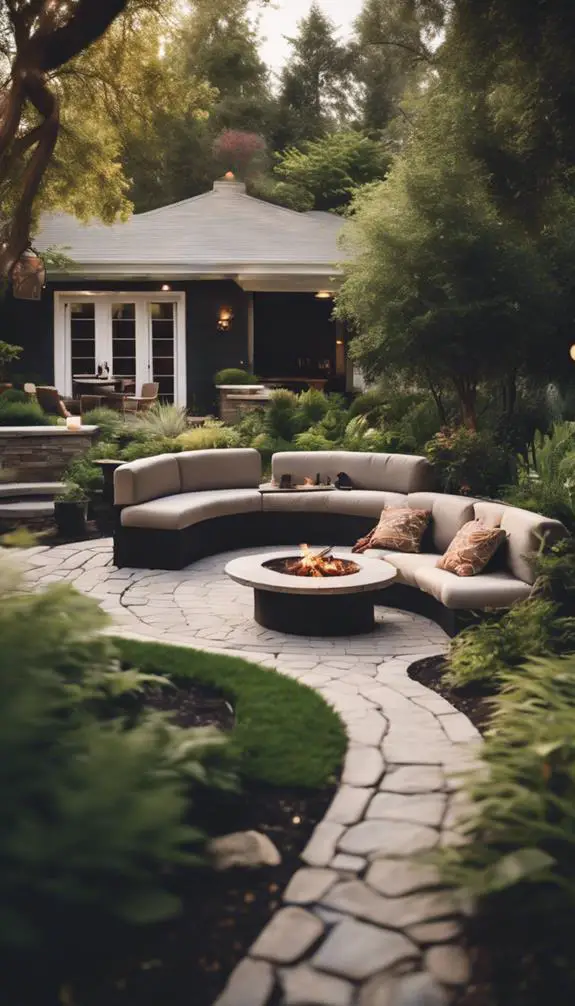
As you've chosen durable materials for your backyard design, now it's time to think about how you'll use your outdoor space.
You'll want to create functional zones that cater to your lifestyle and preferences. Identify the activity areas you need, such as a dining zone, lounge area, or play space for kids.
Consider the flow of traffic and how you'll move between zones. Visualize how you'll use each area and allocate space accordingly. For example, a dining zone might require a patio or deck, while a lounge area might need comfortable seating and shade.
Incorporating Lighting Elements

You can transform your backyard into a warm and inviting space by incorporating lighting elements that enhance the outdoor ambiance.
Strategically placed lights can create a soft glow that accentuates your landscape's best features, drawing attention to water features, statues, or architectural details.
Outdoor Ambiance Enhancement
Three essential elements – texture, color, and light – come together to create an inviting outdoor ambiance.
When designing your backyard, you're not just creating a space, you're crafting an experience.
By incorporating lighting elements, you'll transform your outdoor escapes into nature retreats that evoke feelings of serenity and tranquility.
Strategically placed pathway lights will guide you through your outdoor space, highlighting textured elements like stone or wood.
Meanwhile, string lights or lanterns will add a warm glow, accentuating the vibrant colors of your plants and flowers.
As the sun sets, your backyard will come alive, inviting you to linger and unwind in your newly created outdoor oasis.
Soft Glow Accentuation
Pathway lighting subtly defines the journey through your outdoor space, its soft glow accentuating the textures and colors of your carefully curated landscape.
To achieve a mesmerizing ambiance, strategically place garden lanterns along Moonlight Pathways, casting a gentle, ethereal glow on surrounding foliage and hardscapes.
This deliberate lighting design creates an immersive experience, drawing your attention to specific features and inviting exploration.
As night falls, your outdoor space transforms into a serene, enchanting oasis, perfect for relaxation or entertainment.
Adding Water Features
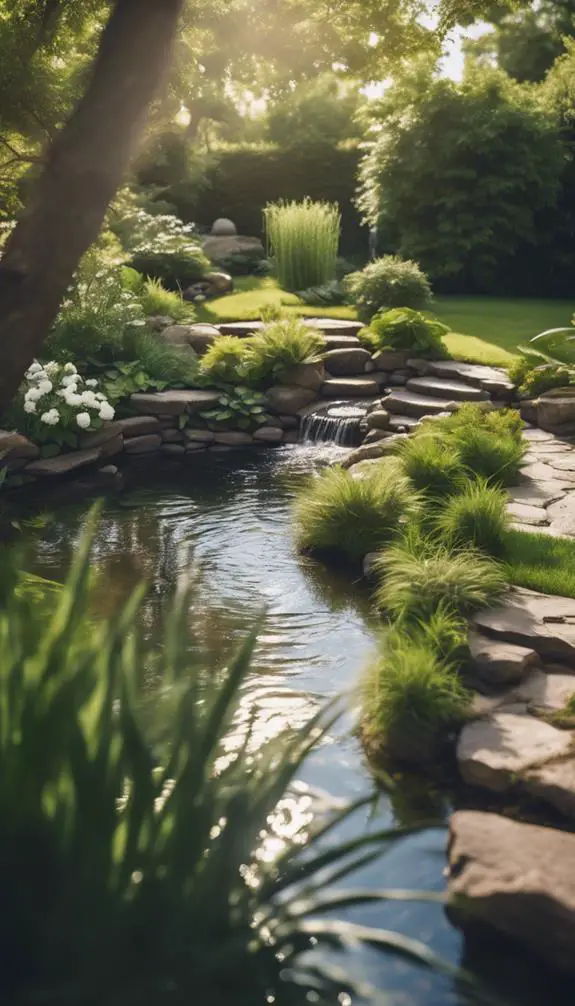
Around the perimeter of your backyard, a gentle babble of water can create a serene ambiance, drawing attention to a focal point or masking background noise.
By incorporating water features, you can enhance the visual appeal of your outdoor space. Consider fountain types that produce soothing water sounds, such as bubbler fountains or spout fountains, which can create a calming atmosphere.
You can also opt for self-contained fountains that recirculate water, reducing maintenance and conserving resources. Strategically place your water feature to create a visual focal point or to block out unwanted noise.
As you design your backyard, remember that water features can elevate the overall aesthetic and create a sense of tranquility.
Creating Outdoor Rooms
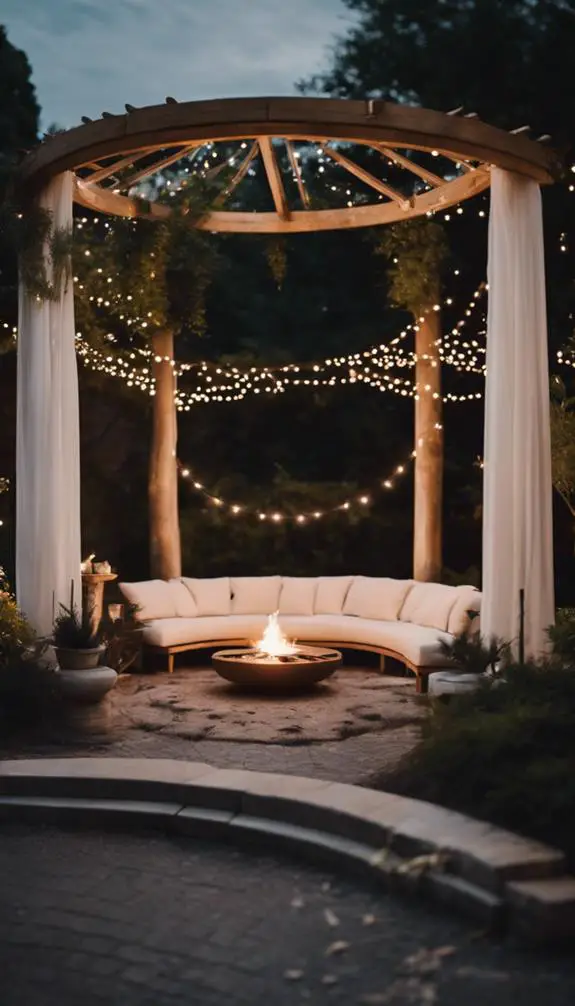
As you've now incorporated the soothing sounds of water features into your backyard design, it's time to focus on creating inviting outdoor rooms that extend your living space.
To achieve this, you'll want to define separate areas for relaxation, entertainment, and dining. Use outdoor accents like pergolas, arbors, and trellises to create a sense of enclosure and define each room's purpose.
Consider adding a statement piece, like a fire pit or outdoor heater, to anchor each space. By incorporating these elements, you'll create private oases that seamlessly blend into your overall backyard design.
As you design each room, think about how you'll use the space and what features will make it functional and enjoyable for you and your guests.
Mixing Textures and Colors

You're now ready to elevate your backyard design by incorporating a diverse range of textures and colors.
To create visual interest, combine rock surfaces with smooth patio stones or wooden decking. This contrast will add depth and dimension to your outdoor space.
Pattern play is another key element to ponder. Mix and match different patterns, such as linear pavers, circular stepping stones, and geometric tiles, to create a unique and dynamic look.
Balance bold colors with neutral tones to avoid overwhelming the senses. By thoughtfully mixing textures and colors, you'll craft a backyard design that's both visually stunning and functional.
Maximizing Small Spaces
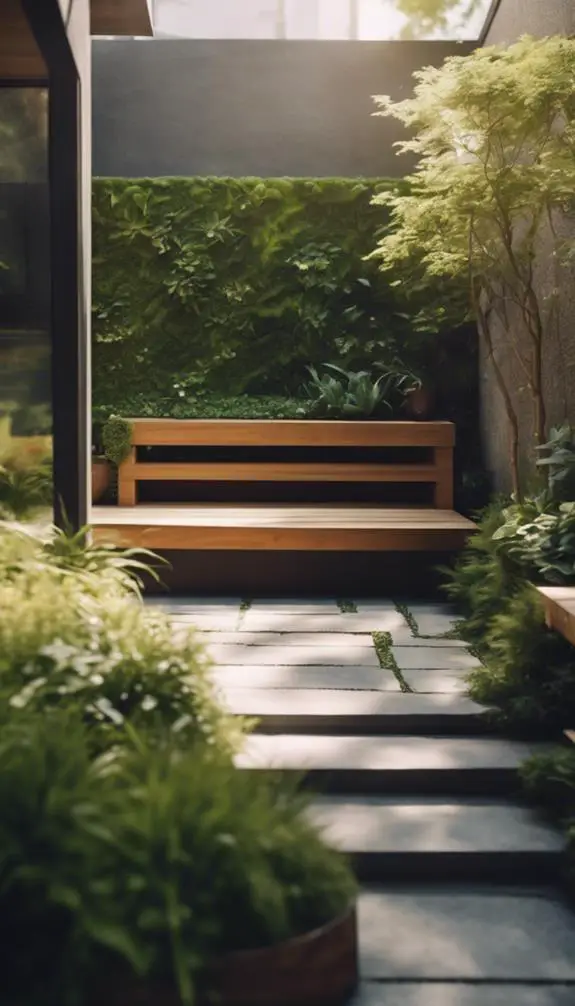
By skillfully blending textures and colors, you've set the stage for a mesmerizing backyard design.
Now, it's time to tackle the challenge of maximizing small spaces. On a small scale, every element counts.
Opt for space savers like vertical planters, hanging baskets, or compact furniture to make the most of your yard's dimensions. Consider a multi-functional piece, such as a storage bench or a table with built-in planters, to streamline your design.
Bringing It All Together
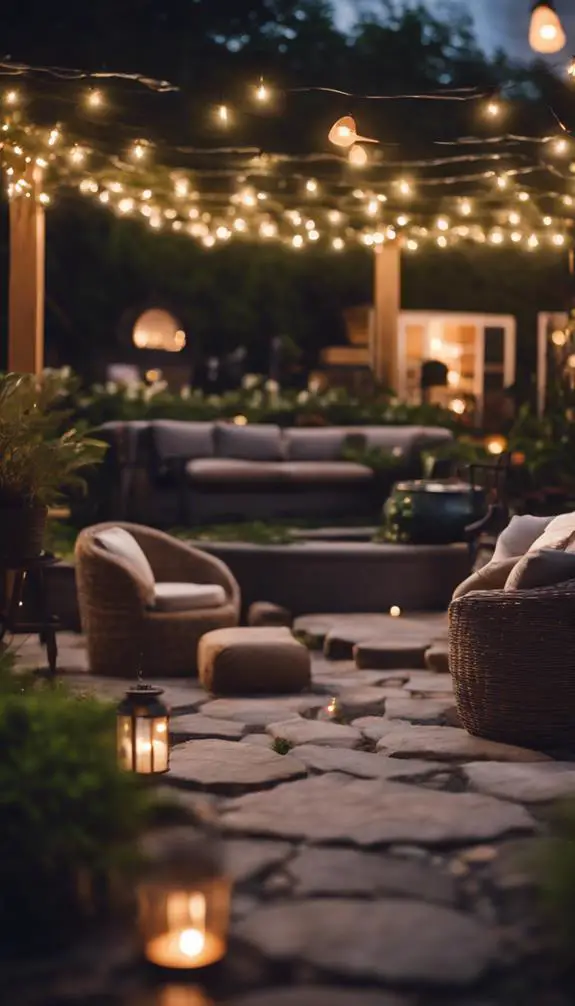
Your backyard design is taking shape, and it's time to integrate all the elements into a cohesive whole.
You've carefully selected each component, from hardscapes to plant life, to create a unique outdoor space.
Now, it's crucial to balance these elements to achieve backyard harmony. Visualize your outdoor sanctuary as a symphony of textures, colors, and forms working together in perfect harmony.
Consider the flow of traffic, the placement of seating areas, and the visual weight of each feature. Make adjustments as needed to guarantee a smooth shift between spaces.
FAQs
How Do I Handle Neighbor Visibility in My Backyard Design?
When dealing with neighbor visibility, you'll want to ponder strategic fence options, like vertical slats or trellis-style barriers, paired with screen planting, such as tall grasses or shrubs, to cleverly conceal views while maintaining airflow and natural light.
Can I DIY My Backyard Design or Do I Need a Pro?
You can DIY your backyard design, but consider your personal style and budget constraints: do you have an eye for spatial relationships and a knack for problem-solving, or will a pro's expertise be worth the investment for a customized, Instagram-worthy space?
How Long Does a Typical Backyard Design Project Take?
You'll navigate a project timeline comprising multiple design phases, typically spanning 2-6 months, depending on complexity and your involvement, with phases like conceptualization, design development, and implementation unfolding in a logical, iterative process.
Are Outdoor Fireplaces and Pits a Good Investment?
When investing in outdoor fireplaces and pits, you'll enhance your outdoor ambiance while ensuring fire pit safety with proper installation and maintenance, ultimately creating a cozy, inviting atmosphere that extends your living space and increases property value.
Can I Design My Backyard to Attract Local Wildlife?
You can create wildlife habitats by incorporating native plants, which provide food, shelter, and breeding grounds, attracting local species and fostering a thriving ecosystem, letting you observe and connect with nature in your own backyard oasis.
Conclusion
By now, you've carefully crafted your backyard design, balancing aesthetics with functionality. You've defined your style, assessed your yard's conditions, and set a realistic budget. You've strategically chosen a focal point, selected materials, and created outdoor rooms. With textures and colors mixed to perfection, you've maximized even the smallest of spaces. As you step back to admire your work, remember to maintain and adapt your design to guarantee it continues to reflect your evolving needs and tastes, certifying your outdoor oasis remains a true extension of your home.



